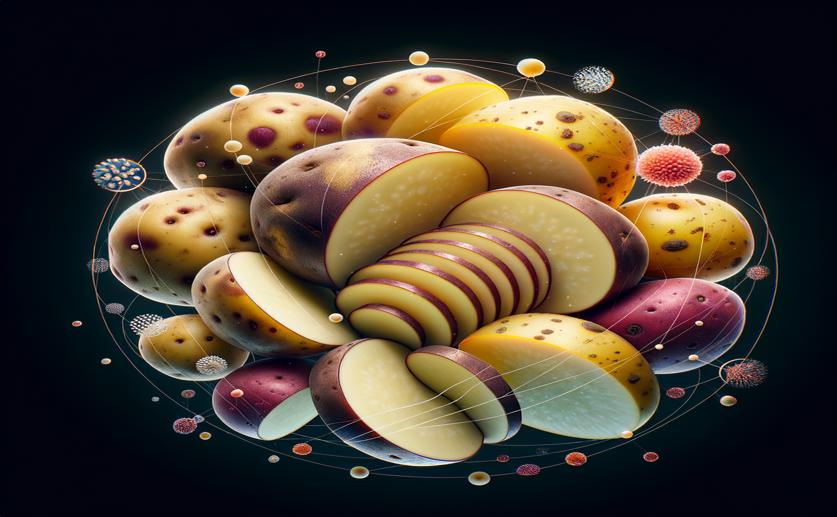
How Genetic Differences Affect Potato Starch and Toxin Levels
Jenn Hoskins
14th March, 2024

Image Source: Natural Science News, 2024
Key Findings
- Study at Wageningen University found 119 potato genes linked to starch production and toxin levels
- Most harmful mutations in these genes exist but are balanced by normal gene copies
- About 70% of these genes are active, affecting potato traits like nutrition and safety
GeneticsPlant ScienceAgriculture
References
Main Study
1) Allelic variation in the autotetraploid potato: genes involved in starch and steroidal glycoalkaloid metabolism as a case study.
Published 12th March, 2024
Journal: BMC genomics
Issue: Vol 25, Issue 1, Mar 2024
Related Studies
2) Pho1a (plastid starch phosphorylase) is duplicated and essential for normal starch granule phenotype in tubers of Solanum tuberosum L.
3) Genome evolution and diversity of wild and cultivated potatoes.
4) Phased, chromosome-scale genome assemblies of tetraploid potato reveal a complex genome, transcriptome, and predicted proteome landscape underpinning genetic diversity.
5) Starch phosphorylation associated SNPs found by genome-wide association studies in the potato (Solanum tuberosum L.).



 9th March, 2024 | Greg Howard
9th March, 2024 | Greg Howard